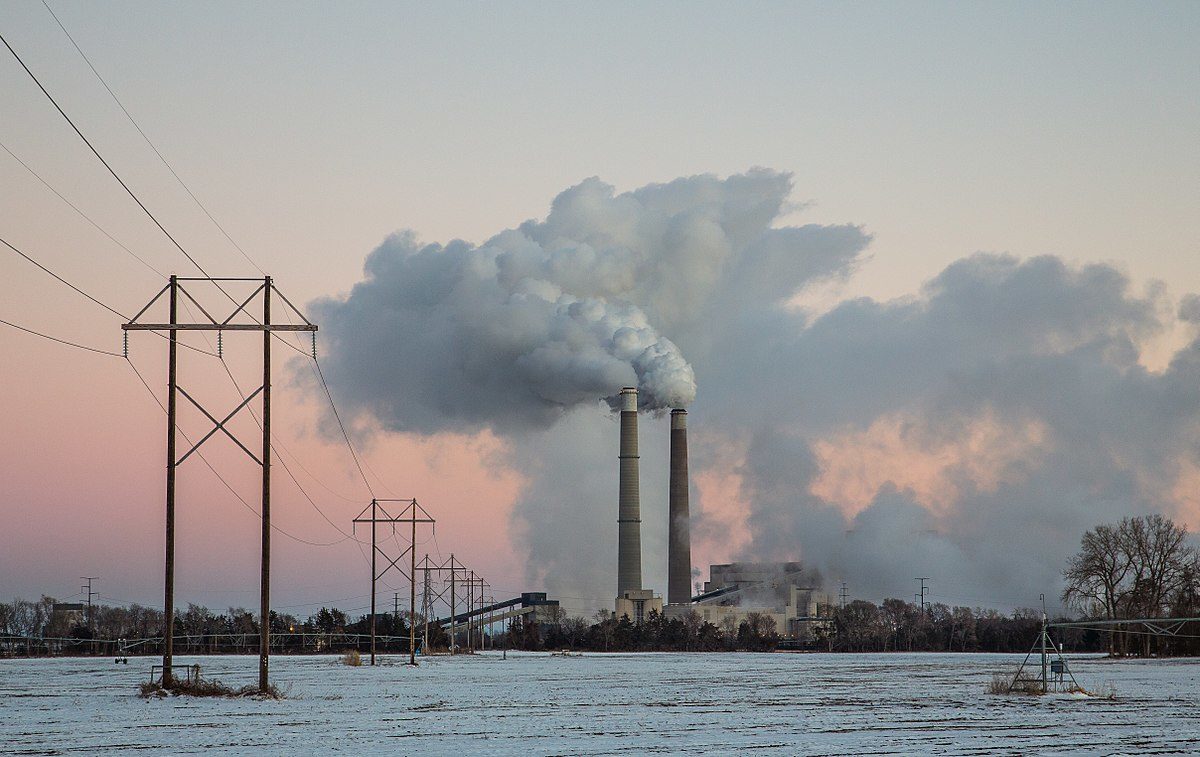With its approval of two El Paso Electric solar power purchase agreements (PPAs), the New Mexico Public Regulation Commission has sent the clearest signal yet about solar’s bright future in the Southwest. These recently approved solar PPAs could also spell trouble for proponents of retrofitting the state’s San Juan Generating Station so that it can capture the coal-fired plant’s carbon dioxide emissions.
“The significance of this is that carbon capture is not going to save coal plants,” said David Schlissel, director of resources planning analysis at the Institute for Energy Economics and Financial Analysis (IEEFA). The San Juan plant’s cost of producing electricity averaged $44.90 per MWh in 2018 and 2019, he said. That’s triple the price of the just-approved solar PPA and roughly 50% higher than the price of the new solar-plus-storage PPA, he pointed out.
Enchant Energy, the company working on retrofitting project at the San Juan Generating Station, in February took issue with an earlier IEEFA report about its the San Juan plant carbon capture project.
One of El Paso Electric’s newly approved solar PPA projects will add 100 megawatts of solar for $15 per megawatt-hour, and the other will add 100 MW of solar and 50 MW of dispatchable storage for about $30 per MWh, including a monthly capacity charge for the storage component of the project. Neither of these solar PPA projects are designed to directly serve customers in the San Juan plant area.
“Who’s going to pay $44.90 for power from San Juan when it is, and will continue to remain, available elsewhere for much less either through a solar PPA or from the wholesale market at Palo Verde? The answer is, no one,” Schlissel said. “That’s the underlying basic fact that you can’t get around,” he said.
“The issue now is, what is the replacement resource going to be?” he added. In April, the New Mexico Public Regulation Commission said that the San Juan plant, which has been an important part of the economy in the Farmington, New Mexico area, can be retired.
Schlissel said it isn’t clear that permanently sequestering the CO2 from the San Juan Generating Station would make Enchant’s carbon capture project economical.
“Permanently sequestering the CO2 from San Juan instead of using it for [enhanced oil recovery] – an option that would produce larger federal 45Q tax credits but which might not be ready until late in this decade and, if and when ready, might be limited to only two million metric ton of CO2 per year, not the six million metric tons that Enchant needs to sell to make its project financially viable,” he said.
According to Schlissel, Enchant has started talking about the revenues that could be produced by selling power from the San Juan project into the wholesale market. “However, this too would clearly be another money-losing proposition, because with an average production cost of $44.90 per MWh, power from San Juan would not be competitive with the price of power at the Palo Verde trading hub, which averaged just $26.58 per MWh in 2019,” he said.
“If you want to reduce emissions, it’s cheaper to do it with renewable energy and energy efficiency,” Schlissel said. The price of renewable energy has fallen 70% to 80% in the Southwest during the last decade, and it is expected to keep dropping, he added.
In April, Enchant announced that its carbon capture project at San Juan Generating Station will benefit from a $22 million Department of Energy cooperative funding agreement awarded to the New Mexico Institute of Mining and Technology.
This content is protected by copyright and may not be reused. If you want to cooperate with us and would like to reuse some of our content, please contact: editors@pv-magazine.com.








““The significance of this is that carbon capture is not going to save coal plants,” said David Schlissel, director of resources planning analysis at the Institute for Energy Economics and Financial Analysis (IEEFA). The San Juan plant’s cost of producing electricity averaged $44.90 per MWh in 2018 and 2019, he said. That’s triple the price of the just-approved solar PPA and roughly 50% higher than the price of the new solar-plus-storage PPA, he pointed out.””
I believe, the “failure to launch” so called “clean coal” plant was tested and proven wrong when The Southern Company constructed the Kemper plant, which was supposed to be “clean coal” using coal gasification, with CO2 scrubber and deep well injection used to extract more oil from old oil fields. Southern found out pretty quickly that Kemper could generate electricity at $95/MWh, but could at (that time), buy electricity from wind generation and solar PV for $40/MWh to $60/MWh. Kemper was retrofitted with natural gas boilers to continue operating the plant. Solar PV with energy storage allows using the Energy Storage System as a grid services asset. The ESS can stack grid services and bring in more revenues than a “purpose built” generation resource like natural gas driven turbines to use as Peaker plants to regulate the grid. Energy storage can be used to time shift generation for later use, used to regulate grid frequency, regulate grid voltage, the so called FCAS services are stacked into one asset, allowing more uses and revenue streams for one asset to pay for itself sooner than later.
Love Solarman!
“I believe, the “failure to launch” so called “clean coal” plant was tested and proven wrong when The Southern Company constructed the Kemper plant…”!
I really would like to see a tell researched article on the current state of hydrogen power cells, including their maintenance and reliability over years. Hydrogen Power cells seems to be the only industrial scalable storage for solar & wind generated power. Yet i see very little press on if the technology is sufficiently reliable and low maintenance .
With PPAs on the rise, it would be good to invest in accurate software such as Gorilla. A SAAS software that can accurately generate forecasts for PPA pricing faster. British Gas uses It.
https://gorilla.co/how-it-works/ppa-pricing/
One of the most common and persistent criticisms of the renewable energy technologies from the fossil fuel industries has been that they are “just collecting tax benefits.” Now that those tax benefits are phasing out, those renewable technologies are still kicking the fossil technologies butts, and it is the fossil fuel industries that are still “just collecting tax benefits,” on top of all the other tax subsidies they have received for decades!
And batteries are only going to get cheaper and better, too!
I agree with Joe Schiller…. more subsidies are being given to a dying Fossil Industry that KILL PEOPLE AND DESTROY NATURE than a Green, Clean and Sustainable Solar Industry. ALWAYS REMBER THIS IN NOVEMBER WHEN YOU CAST YOUR VOTE…
I would point out that you’re proposing to replace 924MW of base load power at the San Juan plants with one of the 100MW alternatives. Where will the additional power come from and what base load backup is the solar generation proposing? Just the 50MW battery storage power? I hope it’s NOT toxic fracked methane from Colorado, deceptively termed “clean natural gas”, because methane (CH4) is over 80X more damaging than CO2 from coal. Will they build 9 of these solar fields at the site to match the 924MW loss? Having worked on a 10MW project, it required 50 acres. What is the total acreage necessary to replace these Farmington plants and their 924MW of generation with solar? Is the transmission already in place for this new solar and that many existing substations? If not, the cost of that must be added too. It’s important to think though these projects completely to avoid failure and power outages, when demand surges.